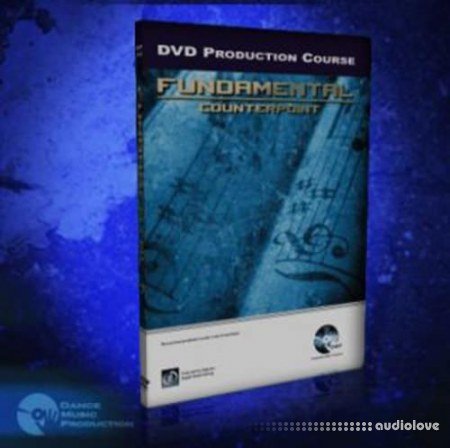Dance Music Production Fundamental 7 Counterpoint [TUTORiAL]

SYNTHiC4TE | 22 September 2013 | 1.37 GB
Counterpoint in Dance Music
Counterpoint is one of the more complex musical theories and therefore often bypassed by many but its theory lays down the foundations musical relationships between different melodies. An understanding of the theory reveals how to create a working relationship between a bass and melody (rather than one following the other note for note, pitch for pitch), and is employed by many artists including Deadmau5 and Sasha to produce a complex musical relationship between multiple melodies.
In this edition of our best selling Fundamental series, we examine the theory of counterpoint and its uses within electronic dance music. Beginning with the theory of texture, intervals and the principles of consonance and dissonance within music, we move on to examine and describe the four types of motion and how they can be employed. With practical examples and compositions throughout, we show how to employ single, two, three and four-part counterpoint along with florid and syncopated versions, and of course, how this is all interpreted to create bass lines, harmonies and melodies that interweave together to produce more complex and interesting, yet fluid, dance music.
Note: Fundamental 7 is a continuation of Fundamental series and therefore we strongly recommend prior viewing of volumes 2, 3 and 4 before approaching this tutorial.
home page
Counterpoint is one of the more complex musical theories and therefore often bypassed by many but its theory lays down the foundations musical relationships between different melodies. An understanding of the theory reveals how to create a working relationship between a bass and melody (rather than one following the other note for note, pitch for pitch), and is employed by many artists including Deadmau5 and Sasha to produce a complex musical relationship between multiple melodies.
In this edition of our best selling Fundamental series, we examine the theory of counterpoint and its uses within electronic dance music. Beginning with the theory of texture, intervals and the principles of consonance and dissonance within music, we move on to examine and describe the four types of motion and how they can be employed. With practical examples and compositions throughout, we show how to employ single, two, three and four-part counterpoint along with florid and syncopated versions, and of course, how this is all interpreted to create bass lines, harmonies and melodies that interweave together to produce more complex and interesting, yet fluid, dance music.
Note: Fundamental 7 is a continuation of Fundamental series and therefore we strongly recommend prior viewing of volumes 2, 3 and 4 before approaching this tutorial.
home page
Only registered users can see Download Links. Please or login.


No comments yet